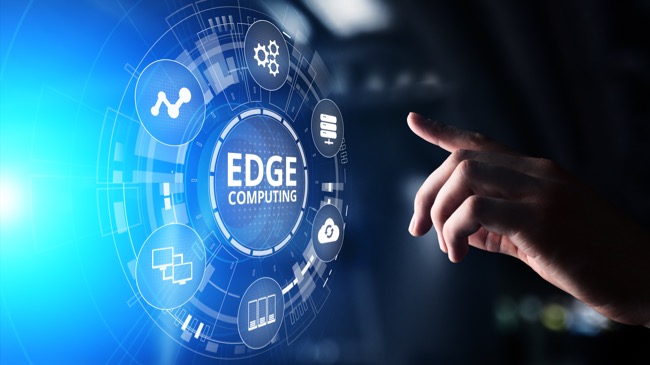Businesses are continuing to hear more about edge computing as cloud technology and the Internet of Things (IoT) rise in popularity. It paves the way for a business to go digital. In spite of this, many businesses are still confused about edge computing.
Understanding Edge Computing
The term ‘edge computing’ refers to a distributed computing system that processes data at the ‘edge’ of the network, which is closer to the data’s original source. Instead of relying on a centralized server, it makes use of the data-generating devices themselves or the computing power that is available locally to compute and keep the data.
Edge computing programs may now respond almost instantly to data input because of this distribution. A network with lower latency can be built using edge data centers and edge-enabled devices. Improved device and network performance is now possible as a result of this.
Edge computing can improve efficiency and improve margins. However, how do you get it to succeed? You can ask edge cloud providers like Cox Edge computing for assistance.
Explore some of the ways in which edge computing can revolutionize your business:
Increased Security
The use of edge computing can help you protect your systems and improve data privacy. Due to decentralization, data is spread out among several machines where it’s generated. One attack on the network or all of its data would be extremely tough for a hacker to accomplish. It’s possible to shut down or contain a cyberattack so that only a single device is infected. Hence, other devices are much less vulnerable.
Improved Scalability
The integration of IoT devices with edge data centers enables businesses to expand their processing capacity at a lower cost than building a dedicated data center. By reducing the network’s bandwidth requirements, processing-capable edge computing systems also help to cut growth expenses.
This scalability boosts edge computing’s versatility and allows organizations to focus on targeted markets without costly infrastructure spending. When the market situation changes, businesses can switch markets promptly.
Lower Operational Costs
The majority of data is processed at the edge data centers or on local devices in edge computing. As a result, both the volume of data transmitted to the cloud and the cost of data transmission is lowered considerably.
Better Customer Service
Data processing at the source enables marketers to design automation that responds quickly and effectively to client needs and inquiries. Additionally, edge computing makes it possible to process data in real-time. The customer’s activities are reflected on-site even before they leave the site or close their browser tab.
You can process customer data such as their locations, previous interactions on-site, and so on in real-time for a hyper-personalized experience in the blink of an eye. Faster responses and more precise information are just two of the many benefits of data-driven interactions.
Industry Benefits From Edge Computing
Edge computing can transform businesses that are in the following industries:
- Manufacturers place a high value on machinery’s uptime and performance. Mistakes can compromise the safety of workers, waste valuable time, and cause operations to be delayed, all of which have an effect on the bottom line. The IoT data can be more swiftly processed and acted upon on the edge of the network than on the cloud, saving the entire production floor from irreversible damage.
- Retailers collect data in warehouses, electronic point of sale or EPOS systems, and on shelves. Stock management needs this data. While transferring data to the cloud for analysis can be useful, it would be easier to deploy edge computing in each store or warehouse to make faster decisions.
- Energy And Utilities. Edge computing can assist energy and utility organizations to enhance predictive maintenance by analyzing data on the edge and taking corrective steps without sending data to a central point for analysis and then sending instructions back to the site. These organizations have a massive and extensive infrastructure. When it comes to proactively monitoring and managing sensors and gateway devices, edge computing can allow near real-time performance.
- The 4G networks can do edge computing, but 5G has the most uses as it’s edge computing’s raw material. Telecom companies can expedite digital transformation, improve end-user experience, and realize cloud possibilities. This reduces operating expenses while growing earnings, business operations, user involvement, and manufacturing reinvestment.
Edge Computing Challenges
Successful edge computing needs careful planning and implementation, which can be difficult without the requisite skills. Complexity can be increased by having a large number of sites gathering and evaluating data. Having too few can result in the loss of important information. There may also be a lack of technical employees on-site, so non-technical operations workers may be brought in to investigate. Utilizing cutting-edge technology and skilled system integrators can help you overcome these obstacles.
Conclusion
As part of your digital integration strategy, you may want to consider edge computing solutions if you’re handling IoT or sensitive data. Edge computing can help you keep costs down and generate processing capacity that can keep up with today’s standards. All these can increase your business profitability.




